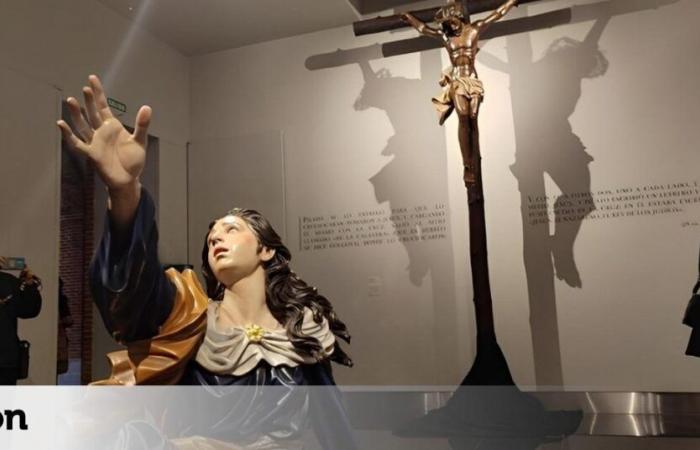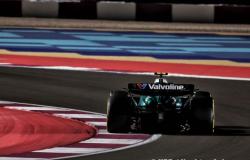
The historic moment has arrived after years of disaster after disaster: with its presentation today to the media, the weekend to the Leonese brotherhoods and tomorrow a great institutional landing, on Wednesday, November 27, 2024, the Diocesan Museum and Holy Week in León (MDySS), more than 1,600 days after completing its works.
The ticket office will be open from 10:00 a.m. to 1:30 p.m. and from 4:00 p.m. to 7:00 p.m. from Tuesday to Saturday and from 10:00 a.m. to 1:30 p.m. on Sundays at a price finally set at 6 euros for normal admission, reduced to 5 in some cases, 9 for guided tours and the same price for an annual Friends of MDySS card that seeks to build loyalty.
Visitors will wander through its eight rooms distributed between the ground floor with access from Mariano Domínguez Berrueta Street and the first floor, where a total of 336 pieces have been arranged with an ordered discursive montage, although only one in three is specifically from Holy Week, almost all donated by the city's brotherhoods, and the rest, 226 pieces, have come from the basements of the Diocesan Museum, basically “works of popular Art”, from goldsmith paintings.
Promise that it will not be given for “lunches or dinners”
As was already feared, most of the space will not be a museum, which corresponds to the entire large original cloister of the Seminary that was covered with a failed and very expensive glass. It will be reserved mainly “for events, not necessarily for Holy Week,” admitted the president of the Board of Trustees of the managing Foundation and vicar of the diocese, Luis García, guaranteeing in a very graphic way that from now on it will not host “lunches or dinners.” “, but congresses, conferences, small ecclesiastical exhibitions of material that cannot be damaged by the sun and heat that condemns this area, concerts or events of some public institutions, and at most with a snack of “coffee break”.
These and other details were presented by those responsible for the Foundation, the two directors of both parts of the museum, Alejandro Grande and Iván González, and by two experts on whom the musealization has pivoted, the doctors in Art History César García Álvarez and Ariadna González del Valle.
They do not see a “failed” project although they do see “very wrong” initial approaches.
García had to admit, when asked by journalists, that the building project, which started with a budget of 4.8 million and ended up rising to almost 8, “never correctly considered” its museum use. But he did deny that it is a “failed” project, defending that they have acted in the face of “an unexpected situation” in the face of problems that “were not initially thought of” and that left “very wrong approaches when making the original museological plan,” Alejandro Grande added.
For this reason, a representative collection of Holy Week has had to be designed only with sculptures or free-standing sculptural groups, where not a single step or throne can and will not fit, because “they are very bulky” and consume excessive space, as was decided. Nor will there be works of high value or symbolism for some of the Leonese brotherhoods, especially the oldest ones, because García admitted that “they give up what they want and see it convenient to give up”, but remembering that the founding criterion was not to deposit in the Museum those works that are “exposed to worship” in their respective headquarters-churches: “The Nazarene will always be in Santa Nonia,” he said graphically.
Luis García: “I hope we get excited again”
Despite all this, all those present, and even later the president of the Greater Board of Holy Week of León, Diana Belén García, nevertheless insisted on a good final result that will have success and impact “among the people of León and the visitors.”
The central idea that structures the passage through the Holy Week rooms is the chronological order of the Passion of Christ, from the events prior to Palm Sunday to the Resurrection, with individualized lighting, introductory panels, other explanatory panels of each section and posters of each work. The discourse of the second and broader part, that of diocesan sacred art, aims to maintain “the evangelizing and catechetical line,” valuing “the popular art and piety of the parishes,” highlighted García, who also admitted that the failures initials and the long time that had passed caused “a progressive cooling” even in the brotherhoods, who believe that now “many prejudices have been overthrown”: “I hope we get excited again.”
All useful information, information, resources, schedules and social networks have been provided on an official website of the Diocesan and Holy Week Museum of León (by clicking here) from which at the moment tickets cannot be purchased, available only at ticket office.





